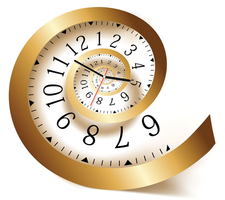Making a retro-style alarm clock
Clocking On

© Lead Image © almoond, 123RF.com
A few electronic components, some code, and a hand-made wooden case make a fine retro-style bedside clock.
When my venerable bedside clock radio and alarm – a present from my parents in the 1980s – finally died, as a maker, my first thought was not, "Where can I buy another?" but "Can I make one?"! I didn't really use the radio (I think it was AM only, and here in the UK, AM is no longer used much), so my ideas began to form around a simple, retro-style digital clock with an LED display in an attractive wooden case.
The case needed to be simple to build because my woodworking skills are limited. I chose a large green LED display for its restful color in the dark, and I wanted the clock to run off a USB wall socket to simplify the power supply design whilst retaining the possibility of running from a small external USB battery pack. I felt some user interface would be required to set the time, set and cancel an alarm, and control the display brightness. Five push-buttons are sufficient for this task. The alarm, of course, requires a buzzer or speaker. Table 1 lists the essential hardware elements.
Hardware Design
The core of the system is an STM32 microcontroller, specifically the STM32F072CBT6 [1]. It drives the display, interrogates the switches, and drives the buzzer for the alarm. You will find a huge variety of microcontrollers on the market, so the choice of an appropriate device can be daunting. Previous experience tells me that ST Microelectronics devices perform well at a good price point and are very well supported in terms of development tools and online resources. Having designed a great many projects around these devices, I also know that software development will be accelerated by my familiarity with the STM32 family and their development tools.
[...]
Buy this article as PDF
(incl. VAT)
